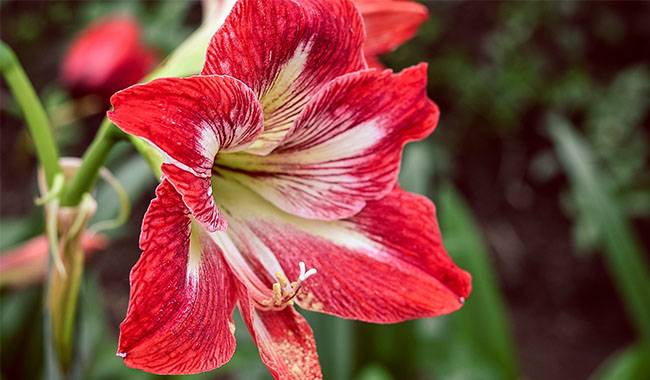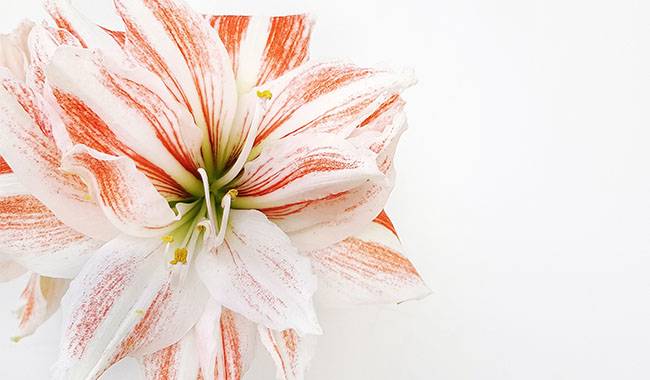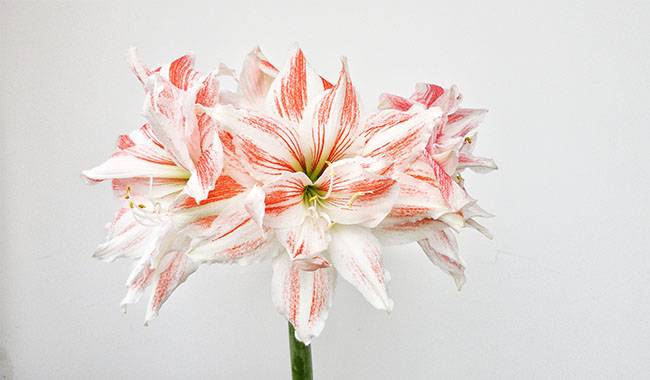
Many flower growers are suddenly enthusiastic about a particular crop, to the point where there are too many of these plants. They want something else. And we want something that no one else has and can’t get – exclusivity. When thinking about the possibility of crossing some of their varieties, they can grow something never seen before, with unimaginable colors and big, lush flowers. So now it’s time to let go. Hippeastrum lovers make the world go round. But first, of course, the theory so as not to waste time and be disappointed. This article from ThumbGarden’s will introduce Hippeastrum – the basic rules, conditions, and personal experience. I’ll tell you how I did it myself.
THE MAIN CONDITIONS FOR GROWING HIPPEASTRUM
I will not discuss in detail the agricultural techniques for growing Hippeastrum. There are enough articles on this subject. In addition, if there is something to cross, there are plants in the house, which are growing and flowering.
After examining your garden, it is best to decide which specific plants will be involved in the hybridization process. The vast majority of Hippeastrum grown are already hybrids, and it is difficult, if not impossible, to know who Hippeastrum’s mom and dad or grandparents are. For amateur breeding, this is not so necessary. It would be a surprise if something unintended blossomed.
Therefore, determine the identity of the Hippeastrum parents.
Plant health, bulb size, flowering stability, number of buds, and number of “arrows” will depend on the parent species, so it is best to choose a “parent” that is discreet but multicolored, healthy, and “multi-arrowed.”
The sire variety is more responsible for flower size, color, and design, so the “dad” should be a handsome and large variety.
Ploidy, i.e., the number of chromosome groups, is a hot issue today. In sea lilies, all is not simple: many natural species and cultivars are diploid, i.e., have two sets of chromosomes. Modern hybrids are, in most cases, artificial polyploids, meaning that they have three, four, or more sets of chromosomes. Unfortunately, it is not possible to distinguish between plants of different ploidy at a glance.
The most common negative consequence of artificial polyploidy is poor seed set. This can be found by looking at your own Hippeastrum. For this reason, it is easier to select from natural or old varieties. But you can also pollinate everything in a row in parallel and record the results. This makes it even more enjoyable. A camera will help. While considering ploidy, it is best to select the mother plant from those more likely to set seed.
Another issue is the problem of terry flowers. Some majors can even do without stamens and pistils, which is, of course, an option. Other plants, on the other hand, grow stamens on some flowers and even produce pollen.
Prospective parents need to be well cared for. Parents should not be “overfed” but relatively healthy and active. Slightly less watering (you can use a watering can) and fertilizing before crossing is even better.

HOW TO GROW HIPPEASTRUM AT HOME
It is unlikely that all Hippeastrum in the house will bloom at the same time. Therefore, you need to make preparations for storing pollen. Plastic bags with snaps and a place on the refrigerator door are good options. Of course, fresh pollen has a much higher germination rate, but I have also had pollen germinate after 3 weeks of storage.
It all starts with “Dad”. From the moment Hippeastrum blooms, it is recommended to start observing it to catch the moment when the pollen starts to mature. The immature pollen lies thickly on the stamens, and the mature pollen starts to break up at the first touch. This occurs on the 2nd to 3rd day after flowering. At this point, pick the anthers with a tool such as tweezers, carefully bag them and sign the date and which variety they came from. Put the bags in the refrigerator.
The next step is to observe the potential mother plant. Once the flower is open, it is best to castrate it, i.e. pull out its pollen cells before the pollen matures, so you can be sure the flower has not been pollinated by its own pollen. Pollen can also be used to pollinate certain things.
Sometime after the pollen matures (if the anthers have not been removed, it will mature), the pistil will open and be ready for pollination. This is clearly visible visually: the three bands of the previously closed pistil will open and release a drop of nectar. Then comes the time. This usually happens in the morning. The optimal temperature for pollination is 64-71 °F (18-22°C). If the temperature is higher and the air is dry, the pollen will lose moisture quickly and the process will be worse.
Take the pollen bag out of the refrigerator and leave it in a warm place for one hour. Then carefully open the bag and “dip” the pistil into the pollen. One can use a cotton swab, or simply take the unsprinkled stamen and “wiggle” it around the pistil – this is especially good if the mother plant is flowering at the same time and the stamen is freshly cut.
Now make sure to hang a label on the flower – the name of the parent plant, the mother plant, the date of pollination, and the freshness of the pollen (the date written on the pollen bag).
Don’t get complacent about this, as flowers that have been pollinated twice have a better chance of setting seeds. Therefore, it is a good idea to repeat the process the next morning for the remaining pollen.
For the purity of the experiment, the pollinated flowers should be tied with gauze to prevent any accidentally awakened flies from interfering with the breeding process. But not necessarily, because gauze certainly does not make the blooming Hippeastrum flowers any prettier.
Then you have to wait a month and a half or even two and a half months. It depends on the temperature and the general condition of the plant, and the variety in question. The mature fruits of the Hippeastrum are three-chambered. Once they start to split, the seeds are ready to be sown. First, check the freshly harvested seeds by immersing them in water and discarding those that float. There is no need to waste energy and time on something that will not sink.
HOW TO GROW SEEDLINGS OF HYBRID HIPPEASTRUM

A box with 50-80 seeds matured, and depending on the results of several pollinations, I got 15-52 germinated seeds.
I germinate fresh seeds on a damp cloth in a closed plastic container, and each hybrid germinates separately. They did not germinate at the same time. Each seed is a pity because, perhaps, this very hardy seed will bloom exclusively.
In general, I try to sow all the seeds. In ordinary garden soil, in a wide, low, round pot that provides a good 1/3 of the height of the pot for drainage. The seeds were buried 0.2 inches (0.5 cm) deep with 1 inch (2.5 cm) between seeds. I put a label with information in each pot. I watered the pot, covered it with plastic wrap, and put it on the windowsill (best for the kids!). Within three weeks, all of them appeared on the surface. As soon as the first shoots emerged, I removed the aluminum foil and continued watering and turning the pot regularly so the seedlings would not lean strongly to one side.
The seedlings grew in these pots for over a year – I had no room to plant them because all the windowsills and adjacent surfaces were already overgrown. So in this already crowded place, they lived until next June. in June, I planted them in the ground. This activity was long and tedious, accompanied by complaints from loved ones (at the hottest time of year!) But I bore it all with the hope that they would be better off underground.
The result was not only better but great!”. It was a hot, dry summer, and the beds were raised, so the ground warmed up nicely, and the bulbs were growing well by mid-August. in mid-August, they were repotted in large, deep casseroles, 10 in each, and sent home on the windowsill.
Since the end of August was a busy time, a small number of bulbs did get affected by the typhoon and the start of the cold snap. These plants were immediately infected with deadly spore disease or red scald. Bulbs dug up for transplanting had to be treated with a disinfectant. They were planted separately but later showed no signs of disease.
In the 3rd year of growth, some bulbs grew a modest flowering stem with a few flowers that could be seen coming out. The results were not the same. As a first result, it was very good, especially since the first flowering of young bulbs is not indicative.
It is of course very sad to lose a large collection of plants. But it was a chance to start from scratch. So we did so.







